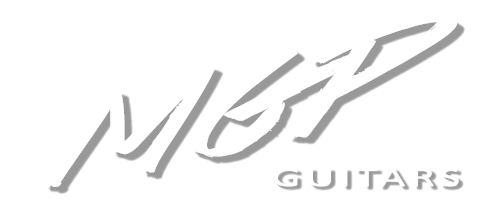In part 1 we created a template for the main scratchplate and in part 2 brass sheet was cut out and shaped to form the scratchplate. In part 3 we designed and built the tailpiece and came up with a design for the bridge and in part 4 we built the bridge and had the scratchplate engraved. In part 5 we move to the other end of the guitar…
When I bought the guitar, an attempt had been made to widen the nut slot in order to accept a piece of 1/4″ x 3/4″ brass bar, that came with the guitar, to be used as the nut. I immediately decided that it was better to make the nut fit the guitar than to try and modify the guitar to fit the nut.

A little time spent with a hacksaw and files produced a rough prototype for the nut…

A thin piece of brass was used to fill the saw cut and the nut fitted to the slot.

The filled saw cut still didn’t look good as it was at an awkward angle compared to the nut, so a decorative cover plate was made using a similar design to the scratchplate.

There was another problem though – this nut would leave the strings too high off the fretboard to be ideal and it could also be improved by being made of thinner material so a new nut was made from a more suitable size brass bar…

Now it was time to turn to the tuners – the only original parts left on the guitar. After some cleaning up & polishing they started looking a lot better…

Unfortunately, although they looked better, they were too worn and the plastic knobs too fragile for them to be used. Luckily there are brand new tuners available that are a direct replacement.

It was all coming together – coming soon part 6: the final assembly…



